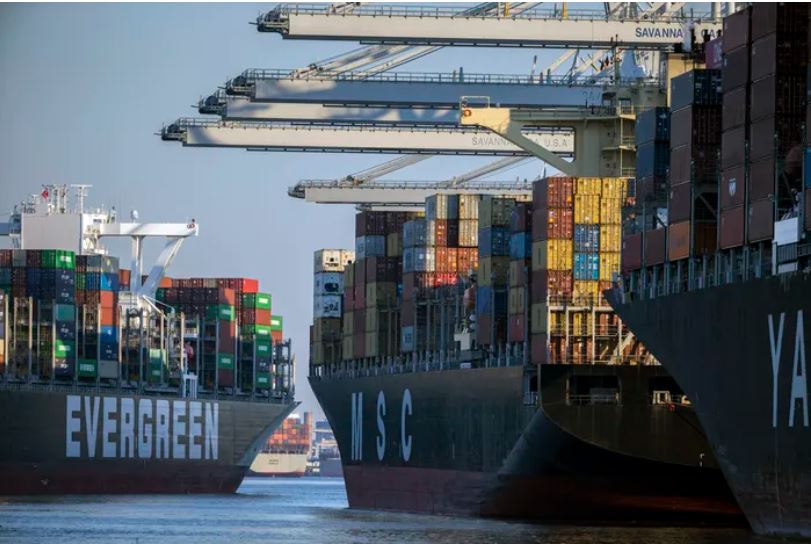While the U.S. economy bounced back with resilience from 2020′s brief but devastating coronavirus recession, there may be trouble ahead in 2022.
Despite the brief recession in 2020, the economy ended 2021 by growing at an unexpectedly brisk 6.9% annual pace from October through December as businesses replenished their inventories, the Commerce Department reported Thursday. This upsurge in inventories means that the underlying fundamental growth may not have been as strong as originally thought.
In fact, squeezed by inflation and still gripped by COVID-19 caseloads, the economy is expected to slow this year. Many economists have been downgrading forecasts for the current January-March quarter, reflecting the impact of the omicron variant.
And for all of 2022, the International Monetary Fund has forecast that the the nation’s GDP growth will slow to 4%.
Many U.S. businesses, especially restaurants, bars, hotels and entertainment venues, remain under pressure from the omicron variant, which has kept millions of people hunkered down at home to avoid crowds. Consumer spending, the primary driver of the economy, may be further held back this year by the loss of government aid to households, which nurtured activity in 2020 and 2021 but has mainly expired.
What’s more, the Federal Reserve made clear Wednesday that it plans to raise interest rates multiple times this year to battle the hottest inflation in nearly four decades. Those rate increases will make borrowing more expensive and perhaps slow the economy this year.
Growth last year was driven up by a 7.9% surge in consumer spending and a 9.5% increase in private investment. For the final three months of 2021, consumer spending rose at a more muted 3.3% annual pace. But private investment rocketed 32% higher, boosted by a surge in business inventories as companies stocked up to meet higher customer demand. In fact, it was rising inventories that accounted for 71% of the fourth-quarter growth.
“The upside surprise came largely from a surge in inventories, and the details aren’t as strong as the headline would suggest,’’ Kathy Bostjancic, Oxford Economics’ chief U.S. financial economist, said in a research note.
The Philadelphia Inquirer, Paul Wiseman (AP)

